Posted by mark on Nov 10 2016 in Landscape Photography, Film Processing, Abstract
Posted by mark on Sep 16 2016 in Film Processing
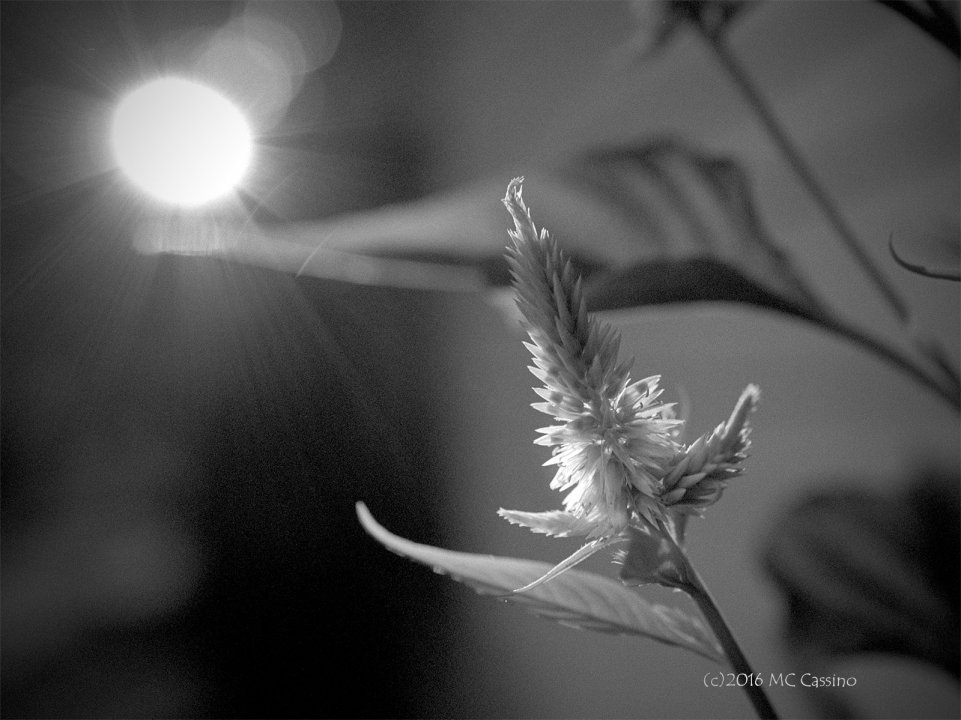
A two pronged test here... first testing a Tamron 28-75 f2.8 zoom with film. Secondly, testing Ultrafinne Xtreme 400 in Microdol-X stock solution. I like the results on both accounts.
I couldn't find a starting time for UFX 400 in Microdol-X, so I used the time for HP5+ and added a minute, which worked out to UFX 400 rated @400 in Microdol-X stock 12minutes at 20C. I've been doing some informal comparisons between Ultrafine Xtreme 400, HP5+, Ilford Pan 400 and Kentmere 400. All are clearly distinct films but UFX 400 and HP5+ are generally very close in processing times, so I'm comfortable using the HP5+ times as a starting point for UFX 400 when developer times are not available.
In regards to the Tamron 28-75 f28 -full name: Tamron AF 28-75mm f/2.8 SP XR Di LD Aspherical (IF) - I wanted a better zoom for my Pentax film bodies, and the Tamron is one of the few current lenses that still works with the cam driven auto focus found in older Pentax film bodies. So far it has proven to be excelent with film. Its also been very good on the APS-C Pentax k3. I am hoping that it will also be serviable on the Pentax k1. Even if it isn't, its an excellent upgrade over the FA 28-105 f4-5.6 and FA 28-70 f4 that I had been using.
Posted by mark on Oct 04 2015 in Landscape Photography, Film Processing, Pictures Of Trees, Midwestern Landscapes, Allegan State Game Area, Allegan Forest
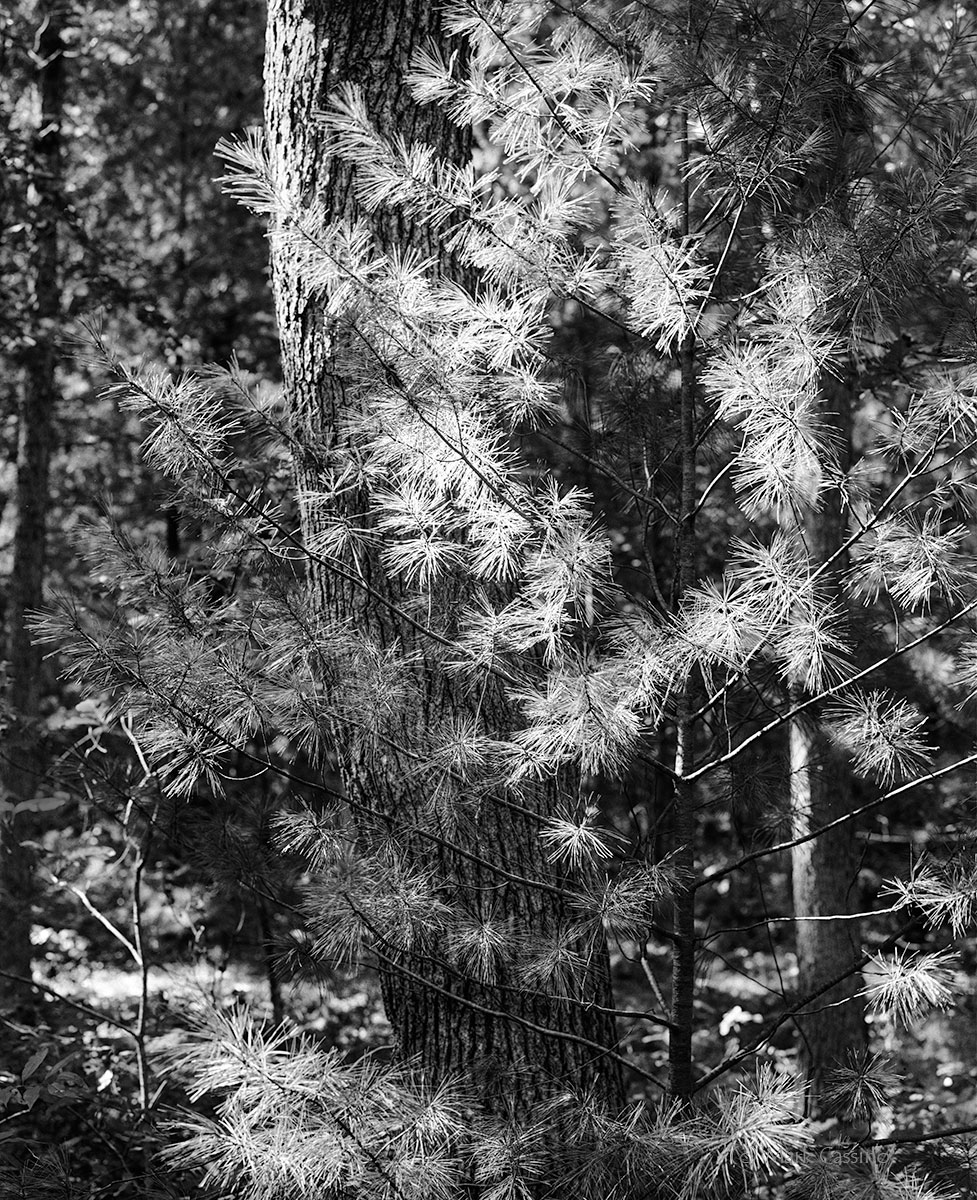
A shaft of sunlight lands on a pine sapling. This was taken on Agfa APX 400 exposed at ISO 64 and pull processed in Rodinal to compress the tonal range. Pentax 6x7 and SMC Takumar 105mm f2.4 lens. Film was rated at ISO 64 assuming the the true sensitivity of APX 400 is more like ISO 250. Taken in Michigan's Allegan Forest.
Posted by mark on Sep 19 2015 in Landscape Photography, Film Processing, Pictures Of Trees, Midwestern Landscapes, Allegan State Game Area, Allegan Forest
Posted by mark on Aug 20 2015 in Film Processing
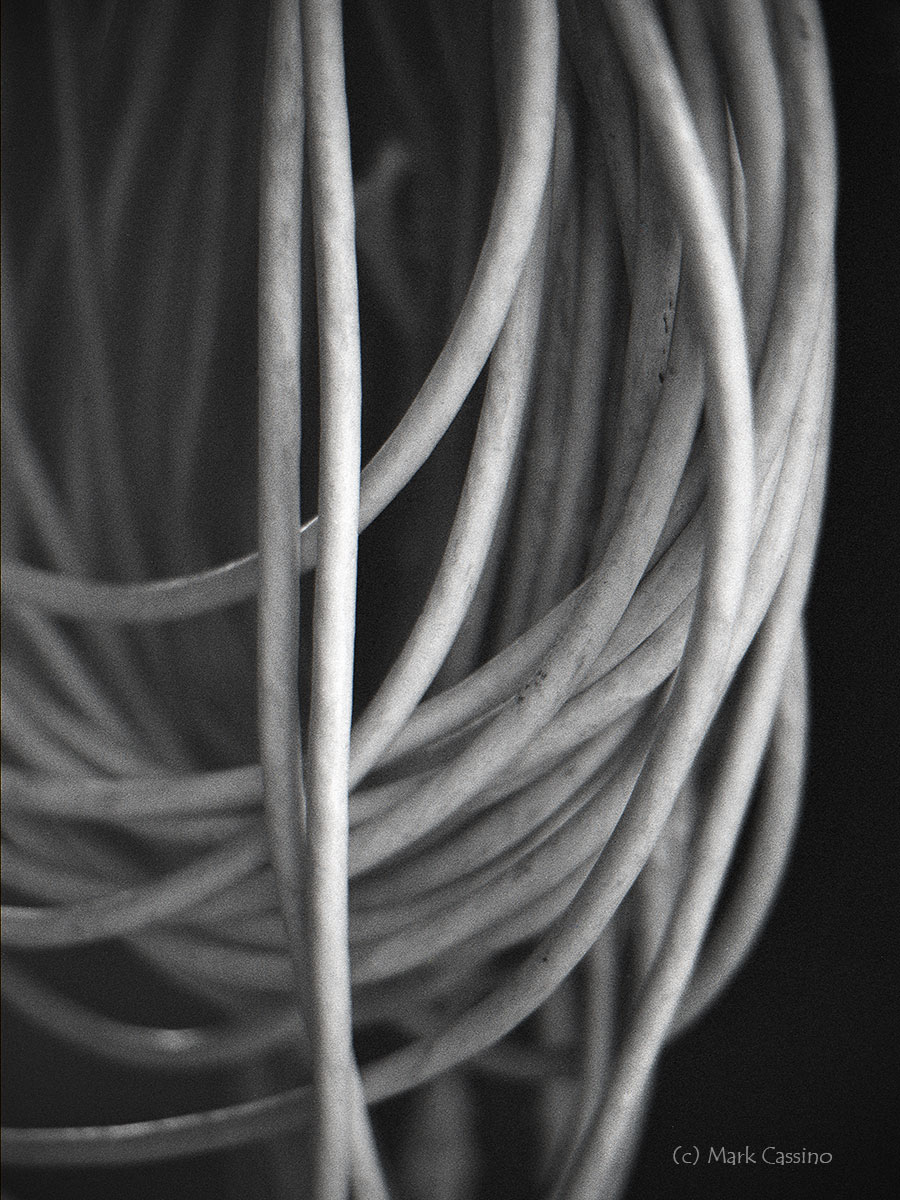
I found several rolls of long expired Pro Max 100 film in my freezer a few days ago. These rolls are very old and when I last used film from this batch it showed severe signs of aging and spoilage. So I figured I'd run some tests to determine the best development time and strategy. If possible, I also wanted to push it a couple of stops to make it more suited for hand held work.
This image is Pro Max 100 pushed to ISO 400, stand processed in HC110, 1:75, 20C, for 90 minutes. The original film is soft, low contrast, and low grain. I boosted contrast in Photoshop and blended in a high pass layer to boost the grain a bit. (I like grain.) I think I have a passable exposure and development strategy for this film - now to burn it up and get rid of it!
One sign of the spoilage in this film is notable staining once developed. It appears in both stand processed and standard processed rolls - basically the stains are faint brown bands that are distinct in color from the developed emulsion and can cover half a frame to a couple frames on the film. So - not a film to be used with critical work, for sure. On the bright side - the canisters this film is packed in are reusable so once it's used up that's more canisters for bulk loading plus more plastic cans.
Pentax ME Super and M 50 f1.7.
Posted by mark on Jul 13 2015 in Landscape Photography, Film Processing, Pictures Of Trees, Midwestern Landscapes, Allegan State Game Area, Allegan Forest
(Click on the image for a much larger file)
I had to laugh when I spotted this sign last week... The last time I was in this place - 11 or 12 years ago - I wandered deeper into the woods and found some large wooden signs, covered with just tatters of paper. Beyond that was a tall steep earthen berm and beyond that was an open field. I like open fields... It didn't take long before I knew I was on the wrong end of a shooting range...
This is a film exposure - 35mm Tri-X. Pentax Mz-S, FA 20-35 f4 lens, XI green filter, film devoped in HC110 Dil B. I am reviving my "sun dappled woods" project, last visited in 2008.
Posted by mcc on Sep 22 2013 in Landscape Photography, Film Processing, Pictures Of Trees, Midwestern Landscapes, Infrared
Another (probably the last) photo from my trip up north last week. These are sand dunes in Ludington State Park, just north of Ludington, Michigan. The dunes are located between Lake Michigan and Hamlin Lake. This was taken looking east, with Lake Michigan to my back:
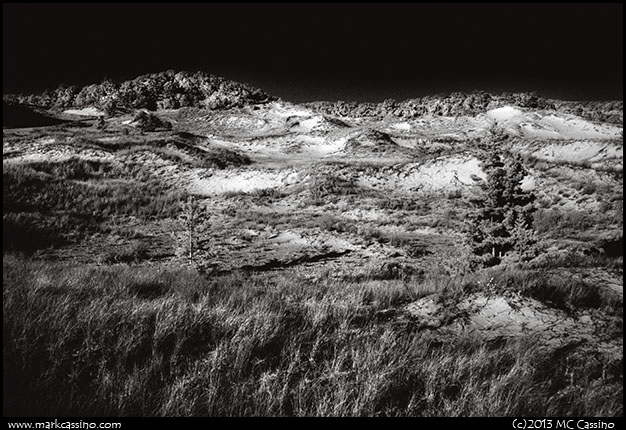
Click on the image for a larger file.
The image was made with Rollei IR 400 B&W film and a Hoya R72 IR filter. I have to say I was a little disappointed in that the film just did not deliver much IR effect. It was a couple of years out of date, though stored in the freezer, so maybe that had something to do with it.
I’ve commented on this film before in this post. While up north last week I decided to shoot out my stock of this film, more or less just to get rid of it. I used a #29 deep red filter for most work, hoping to tease out some IR effect, but it really just behaved more like a standard B&W film.
The Hoya R72 filter really made the azure sky of summer turn dark black, but otherwise did not coax out much on an IR response. Here is a comparison of two shots of the same scene, on taken with the #29 deep red filter and one with the R72:

This time round I stand developed the film in HC-110. I rated some rolls at ISO 800 and some at ISO 400. The ISO 800 rolls I stand processed in HC-110, diluted to 1:100, for 75 minutes. The ISO 400 rolls were stand processed for 60 minutes. I experimented with more dilute solutions, but the double roll Paterson style tanks I was using have a maximum capacity of just over 650ml of water, and the solution could not get much more dilute than 1:100 with falling below the minimum amount of HC110 syrup needed per roll (6 ml). (Though they were double roll tanks only one roll was developed at a time with 650ml of solution.) The one time I did try a higher dilution I used only 4ml of HC110 concentrate, and the negatives were thin.
These shots were taken with a tripod mounted Pentax LX and FA 28-105 f4 - 5.6 power zoom lens (an older AF lens model.) I avoid newer film bodies (Mz-S, *ist) with IR film since they are reported to fog IR film.
Posted by mcc on Jun 26 2013 in Film Processing, Pictures Of Trees, Infrared
I’ve been shooting a lot of B&W 35mm film these days and last weekend I though I’d shoot out my last roll of Kodak HIE High Speed Infrared film. This has been sitting in the deep freeze for some time - expired in February 2009 - and it seemed to be time to use it. SO I loaded it into the trusty Pentax LX and screwed a deep red filter onto the FA 20-35mm f4 lens.
Here are the best two shots of the roll. I have to confess that I am a little disappointed - I had hoped that the last roll of this great film would result in something really interesting, but not…
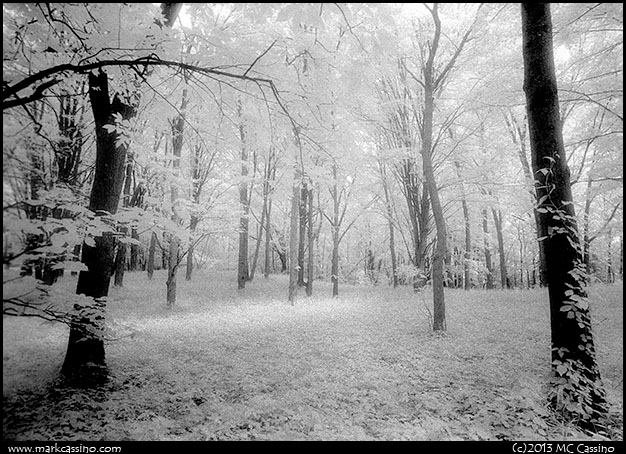
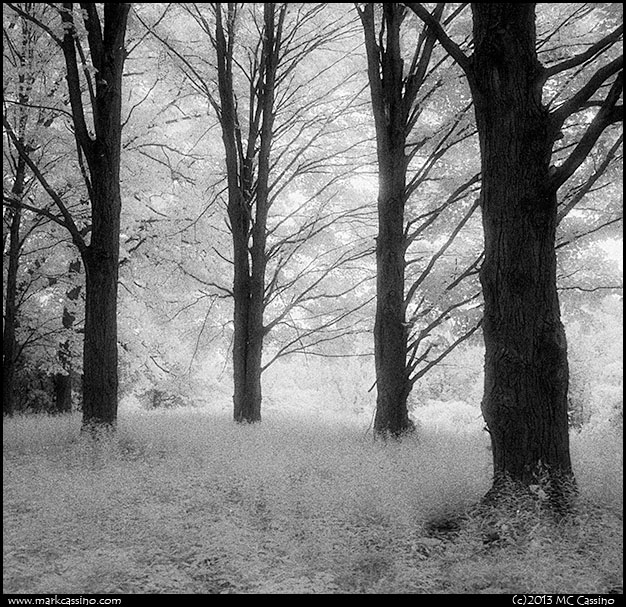
Well - at least the film seemed to be fine even 4+ years out of date. I shot it at ISO 200, bracketed most of the shots, and developed in Rodinal 1:50 for 15 minutes. (The Rodinal is probably about as old as the film.) It was definitely too dense and over developed which puzzles me, since I’ve used that developer and time frequently in the past. Vuescan’s multiple exposure setting (formerly long exposure pass) saved the highlights, even though each batch of 12 exposures took many hours to scan.
So - this film is gone for me. I have some Rollie IR that is also getting old that I need to burn up, and somewhere here I have some old odd-ball IR surveillance film that someone sent me a few years back that I need to use as well, plus there’s some rolls of 120 SFX down in that deep freeze… So I guess my IR film days are not totally over, but my time with HIE is finished.


